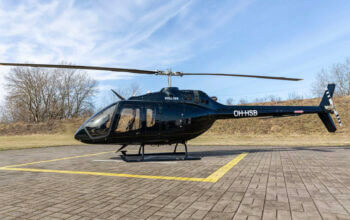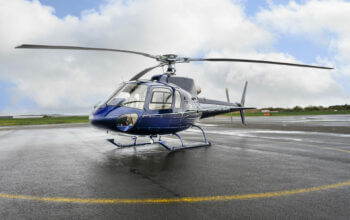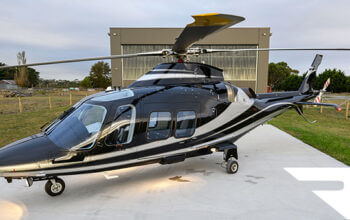Estimated reading time 8 minutes, 12 seconds.
The Airbus H160 has completed its cold weather test program in northern Canada, as the aircraft continues its journey towards certification in late 2018 or early 2019.
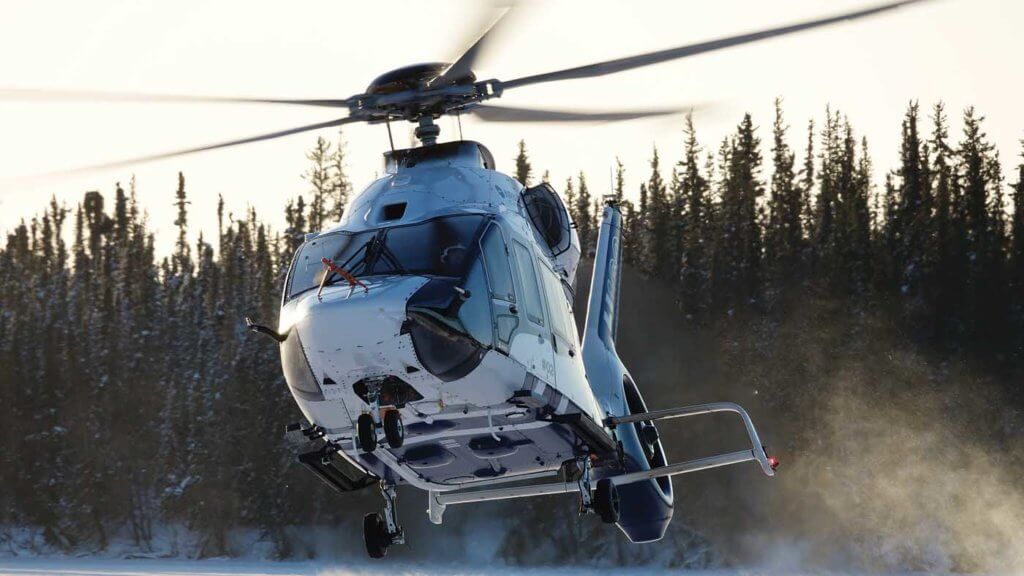
The 5.5- to 6-tonne twin-engine aircraft, unveiled at HAI Heli-Expo in March 2015, is powered by the 1,200-horsepower Safran Arrano, and features a number of innovations, including a fully composite airframe, Airbus’s proprietary Blue Edge rotor blades, electrical landing gear, a new canted Fenestron tail rotor, and a biplane horizontal stabilizer.
The H160 was ferry flown to the cold weather testing site in Yellowknife, N.W.T., in December 2016, and began flight trials in the first week of January.
Bernard Fujarski, head of the H160 program, said the team was looking to expose the aircraft to temperatures as low as -40 C during the tests.
“They are looking especially to assess the dynamic behaviour of the aircraft, the performance in cold weather, and we are interested in performing several cold soaks and then starting the aircraft to see how the systems are working,” he told Skies.
While he wouldn’t share specifics in terms of the aircraft’s performance, he did say that the feedback from the flight team has been positive, and that the aircraft’s systems are behaving as predicted.
Prior to travelling to Yellowknife, Airbus took the H160 to a climate chamber in Vienna, Austria, to complete some low and high temperature tests.
“It was an excellent dry run for the campaign,” he said. “We had to make some little adjustments–not too much–and so far the results are according to our expectations. Especially the behaviour of the engine is extremely good.”
Airbus is planning to invite representatives from various airworthiness authorities, including the European Aviation Safety Agency (EASA), Transport Canada, and the Federal Aviation Agency, to visit the aircraft in Yellowknife in mid-February.
Also joining the Airbus crew of one pilot, two flight engineers, and five mechanics on location are representatives from its customer support division–speaking to the manufacturer’s aim to launch the H160 with a high level of maturity in both performance and support.
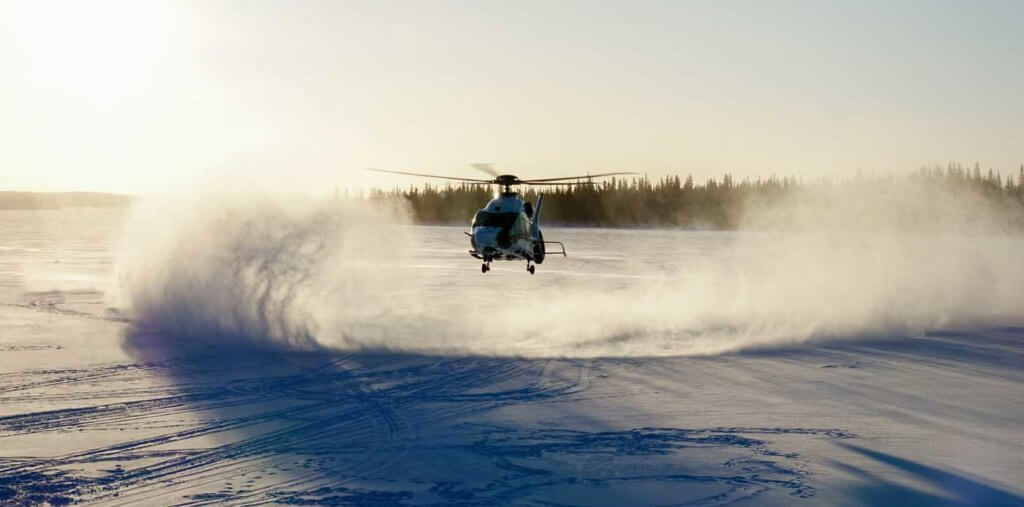
“We started the program with a dedicated team performing concurrent engineering–at the same time we are developing the product, the industry [manufacturing], and the maintenance of the aircraft,” he said. “So we’re using the [Yellowknife] campaign to also check what we are developing regarding the maintenance–the maintainability, the tooling, the procedures, the accessibility–in cold temperatures,” he said.
Program Progression
By the end of 2016, the H160 program had accumulated more than 300 flight hours between its two flying prototypes–PT1 and PT2. The team had also completed the equivalent of 150 flight hours on its “Dynamic Helicopter Zero.” Containing the aircraft’s engines, transmission, rotors and tail boom, the platform is used for dynamic and power checks.
In July, the program passed a key milestone with the freezing of the aerodynamic configuration of the H160’s dynamics assemblies, and the completion of load valuation flights.
“We’ve now got everything in our hands in order to design the serial parts,” said Fujarski, adding that the helicopter was still to perform fatigue tests to determine the life limit of mechanical parts.
Progress has also been good on the manufacturing model to build the H160, with assembly beginning on the first station of the assembly line. For the serial aircraft, Airbus will use a “major component assembly” model, whereby separate modules (including tail boom, central and front fuselage, cockpit avionics bay, main dynamic components, and blades) are fully built and tested in parallel at various Airbus facilities around Europe, and then shipped to the H160’s final assembly line (FAL) in Marignane, France.
“Our industrial model is validated with work-share between the sites of the [Airbus] group in Germany, Spain and France,” said Fujarski. “We’ve also started the maturity checks regarding the industry–for instance, we have already used the manufacturing [system] to assemble the third prototype in order to check that the industrial process is well defined, and adjust what needs to be adjusted.”
The third prototype (PT3) is now in final assembly, but is not due to fly until mid-year. This is because Airbus needs to validate the modifications it has implemented in PT3 from the previous prototypes.
According to Fujarski, the major changes were related with the relocation of avionics and some electrical equipment from the rear to the front in order to optimize the aircraft’s center of gravity, while the air intakes and cowlings have also been reshaped, and a final main rotor mast length has been chosen.

“PT3 is in what we call Standard One configuration, whereas PT1 and PT2 were built according to Standard Zero configuration,” he said. “We are now working on Standard Two, which will be the standard certified and delivered on the first helicopter.”
The H160 has already been assessed by a number of potential customers, with 15 pilots having the opportunity to fly the aircraft in September and December last year.
“So far the feedback was extremely good regarding the vibration level of the aircraft, the external and internal sound ¾ which is extremely low, the visibility from the cockpit, and more generally speaking the maturity of the aircraft at that stage of the program,” said Fujarski.
The manufacturer began taking letters of intent for the H160 in March at Heli-Expo last year, but has not disclosed the total it has received so far. It plans to turn these into firm orders once it has firmed up performance and pricing later this year.
Fujarski said they will be speaking with potential launch customers about the manufacturer’s commitment regarding the H160’s performance, delivery date, configurations, and commercial conditions in the coming weeks. He said this information will be publicly disclosed by mid-year.
In terms of the flight test campaign, one important outstanding element is to test the indirect effect of lightning, which will be done on PT3. The program will then begin certification tests and flights with the regulatory authorities.





